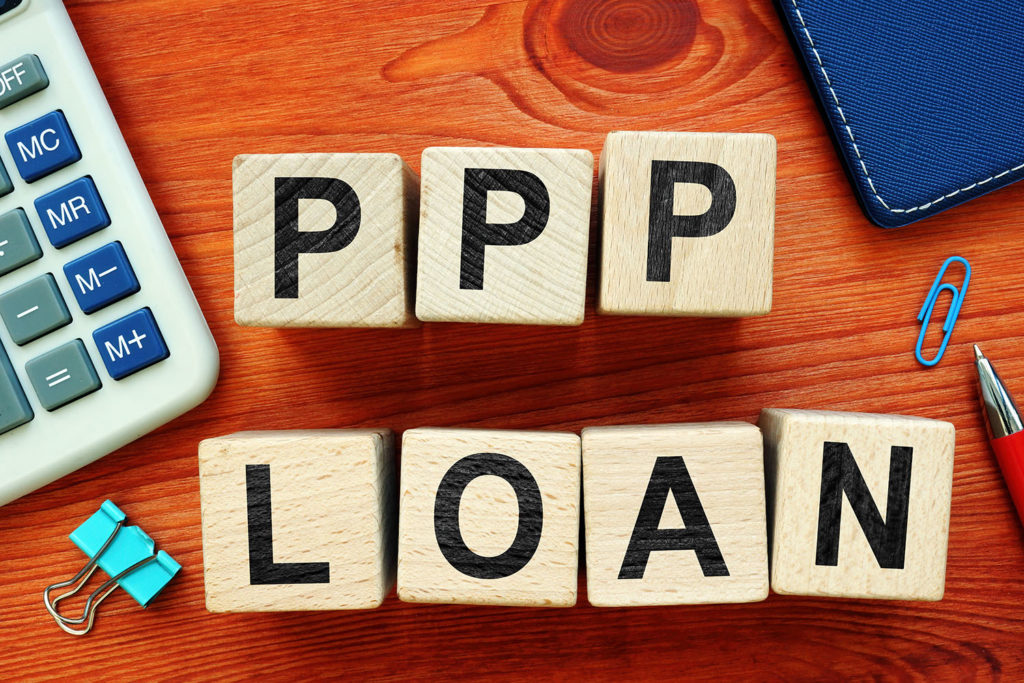Paycheck Protection Program (PPP) is part of the $349 billion Federal stimulus package designed to provide access to cash so that businesses can keep paying their employees and other expenses such as health insurance premiums, rent or mortgage payments and utilities.

Who qualifies?
If you own a business, 501(c)(3) non-profit organization, 501(c)(19) veterans organization, or Tribal business concern with under 500 employees and have been affected by Coronavirus (COVID-19) you may be eligible. Also, if you’re a sole proprietor, independent contractor, or self-employed you also may be eligible for these loans. You also had to be in business as of February 15, 2020.
How do you apply?
Since the program opened, April 3, there have been a flood of applications, the SBA recommends that you first consult with a local lender with whom you already have an existing lending relationship, as to whether it is participating in the program.
However, you can apply through any existing SBA 7(a) lender or through any federally insured depository institution, federally insured credit union, and Farm Credit System institution that is participating.
You only can apply once, so if you try and apply with multiple banks, ask for a guarantee that the lenders will contact you before submitting your file, so you are not triggered for fraud.
If you wish to begin preparing your application, you can download a copy of the PPP borrower application form to see the information that will be requested from you when you apply with a lender. The program is available now through June 30, 2020.
Loan Details and Forgiveness
According to the SBA, Individual businesses may be eligible for up to $10 million in forgivable loans if employees are kept on the payroll for eight weeks and the money is used for payroll, rent, mortgage interest, or utilities.
The loan will be fully forgiven if the funds are used for payroll costs, interest on mortgages, rent, and utilities (due to likely high subscription, at least 75% of the forgiven amount must have been used for payroll). Loan payments will also be deferred for six months. No collateral or personal guarantees are required. Neither the government nor lenders will charge small businesses any fees.
Loan forgiveness is based on the employer maintaining or quickly rehiring employees and maintaining salary levels. Forgiveness will be reduced if full-time headcount declines, or if salaries and wages decrease. When calculating your loan, salaries will be capped at $100,000.
Otherwise this loan has a maturity of 2 years and an interest rate of 1%.
Tracking 8-Week payroll
According to guidance issued by the Department of Treasury on April 2, 2020, the eight-week period begins on the first day lenders disperse funds to businesses. This regulation also noted lenders should issue funds no later than 10 calendar days from the date of loan approval.
Beware of Scams
It’s as important as ever to be vigilant about consumer protection.
Make sure you never provide private information – social security numbers, credit card details, or banking information – to anyone calling, emailing or some other way claiming to be from the Treasury Department or the SBA offering you grants or stimulus payments. Scammers could use this information to apply for a loan on your behalf.
Be wary of any false promises for quicker loans and faster processing. It is best to go through a federally backed credit union or traditional SBA lender, as they’ll be the most familiar with the program and as such get up to speed on new processes sooner.
Source: These summaries are based on interpretations of the CARES Act; U.S. Treasury guidance released March 31, 2020; U.S. Treasury guidance released April 2, 2020; and FAQs released April 7, 2020.
Please Note:Due to various factors, including changing market conditions and/or applicable laws, the content may no longer be reflective of current opinions or positions. Moreover, you should not assume that any discussion or information contained in this blog serves as the receipt of, or as a substitute for, personalized tax advice from Ballast Tax Services. To the extent that a reader has any questions regarding the applicability of any specific issue discussed above to his/her individual situation, he/she is encouraged to consult with the professional advisor of his/her choosing. Ballast Tax Services is neither a law firm nor a certified public accounting firm and no portion of the blog content should be construed as legal or accounting advice.
Ballast Tax and Business Services does not make any representations or warranties as to the accuracy, timeliness, suitability, completeness, or relevance of any information prepared by any unaffiliated third party, whether linked to Ballast Tax’s website or blog or incorporated herein, and takes no responsibility for any such content. All such information is provided solely for convenience purposes only and all users thereof should be guided accordingly.
